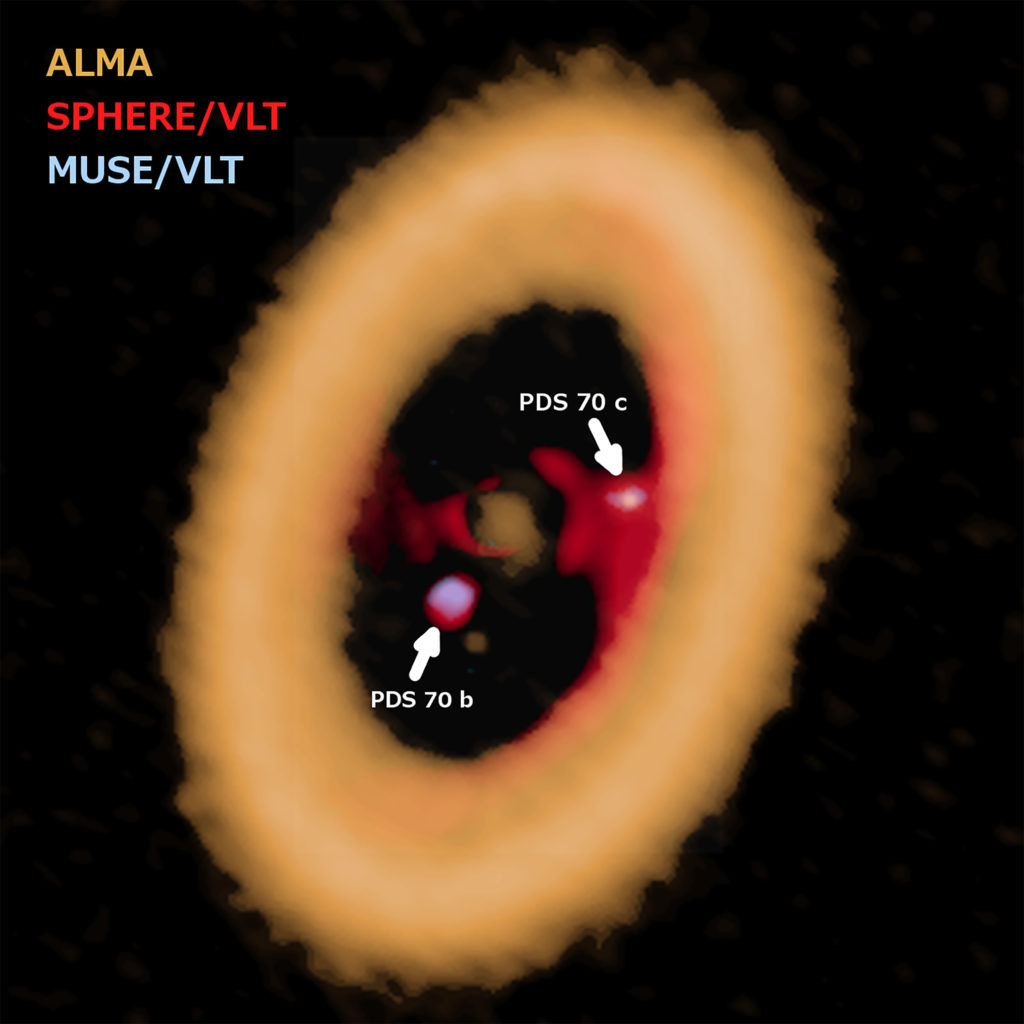NASA | STScI | HubbleSite | 2019 Jun 03
Astronomers have directly imaged two exoplanets that are gravitationally carving out a wide gap within a planet-forming disk surrounding a young star. While over a dozen exoplanets have been directly imaged, this is only the second multi-planet system to be photographed. (The first was a four-planet system orbiting the star HR 8799.) Unlike HR 8799, though, the planets in this system are still growing by accreting material from the disk. ...
The host star, known as PDS 70, is located about 370 light-years from Earth. The young 6-million-year-old star is slightly smaller and less massive than our Sun, and is still accreting gas. It is surrounded by a disk of gas and dust that has a large gap extending from about 1.9 to 3.8 billion miles.
PDS 70 b, the innermost known planet, is located within the disk gap at a distance of about 2 billion miles from its star, similar to the orbit of Uranus in our solar system. The team estimates that it weighs anywhere from 4 to 17 times as much as Jupiter. It was first detected in 2018.
PDS 70 c, the newly discovered planet, is located near the outer edge of the disk gap at about 3.3 billion miles from the star, similar to Neptune’s distance from our Sun. It is less massive than planet b, weighing between 1 and 10 times as much as Jupiter. The two planetary orbits are near a 2-to-1 resonance, meaning that the inner planet circles the star twice in the time it takes the outer planet to go around once.
The discovery of these two worlds is significant because it provides direct evidence that forming planets can sweep enough material out of a protoplanetary disk to create an observable gap. ...
Two Accreting Protoplanets around the Young Star PDS 70 ~ S.Y. Haffert et al
- Nature Astronomy (online 03 Jun 2019) DOI: 10.1038/s41550-019-0780-5 (pdf)
viewtopic.php?p=285135#p285135
viewtopic.php?t=38435
viewtopic.php?t=30002


